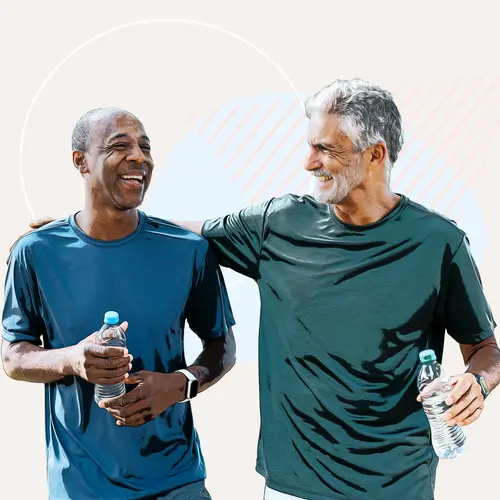Hypokinesia is when your movements are not as wide-ranging as they normally should be. It is often considered part of bradykinesia — a condition in which your movements are very slow. Bradykinesia can also include akinesia, where there is no movement.
In general, hypokinesia, bradykinesia, and akinesia can be grouped under the umbrella term of “bradykinesia”.
Bradykinesia is a symptom of Parkinson's disease or parkinsonism. Parkinsonism is a term used to describe movement disorders that cause many of the symptoms of Parkinson's disease.
What Causes Hypokinesia?
Hypokinesia is caused by a loss of dopamine in the brain. Dopamine — a neurotransmitter, which helps your nerve cells communicate — plays an important role in your motor function.
Though Parkinson's disease is a main cause of hypokinesia, it can also be a symptom of other disorders. Some medications can also cause parkinsonism.
Parkinsonism can be caused by:
- Antipsychotic medicines that block dopamine action
- Other medications (like metoclopramide and prochlorperazine)
- Head injury (especially repeated head injuries)
- Toxins (e.g., carbon monoxide and methanol)
- Brain tumors
- Strokes
- Alzheimer disease (a type of dementia with symptoms of mental decline)
- Other degenerative diseases
- Viral encephalitis (inflammation of brain tissue)
- Wilson disease (buildup of copper in the brain, liver, and other organs)
What Are the Signs of Hypokinesia?
Signs of hypokinesia can show up with any of your body movements. Also, hypokinesia can affect your whole body, one side of your body, or just one body part {European Parkinson’s Disease Association.
Bradykinesia and hypokinesia may also cause you to perform movements more slowly as you continue doing them. Some ways this can happen include:
Sequence effect. As you walk, your steps may get slower and closer together. This is called the sequence effect.
Freezing of gait. When your gait freezes, you feel like you want to walk but you can't move your feet forward. This effect can be brief and happen in short episodes. Unfortunately, it can cause you to fall, making it one of the worst movement disorders of Parkinson's disease or parkinsonism.
Masked face. Facial bradykinesia happens when you are slower to make facial expressions. Facial expressions are also reduced when you make them. This can happen with voluntary and involuntary facial expressions.
Small handwriting. You may get micrographia, where you write in small, cramped handwriting. Your handwriting may also get smaller as you continue to write. This is often an early symptom of Parkinson's disease or parkinsonism.
How Is Hypokinesia Treated?
Parkinson's disease has no cure, but there are treatments available that can help control your symptoms, including hypokinesia. These can include medications, therapy, and a procedure called deep brain stimulation (DBS).
In DBS, electrodes are implanted in your brain and connected to a generator in your chest. This way, electrical pulses are sent to your brain easing your symptoms.
For parkinsonism, the treatment depends on the cause. If it’s caused by medication, it may be cured when you stop taking the drug.
If the underlying disorder can be treated, hypokinesia may improve. Medications may be helpful, though they are not generally as effective at treating parkinsonism as they are at treating Parkinson's disease.
Some lifestyle modifications may relieve the symptoms of both Parkinson's disease and parkinsonism, which are described below.
Exercise. Exercise can help improve your balance and flexibility in addition to making you stronger. Exercise also offers emotional benefits such as helping with anxiety and depression.
Choose an exercise that you enjoy such as swimming, gardening, or dancing. It may also help to work with a physical therapist to find the best exercise program for you.
Occupational therapy. An occupational therapist may be able to help you with techniques that make your activities of daily living, or ADL, easier. This includes activities such as dressing, bathing, and eating.
Healthy diet. There is no specific diet for hypokinesia, but one of the side effects of bradykinesia can be constipation. Eating food that is high in fiber can help. Food that is high in omega-3 fatty acids may also be good for people with bradykinesia.
Avoiding falls. If your hypokinesia progresses, you may be more prone to losing your balance and falling. And, here are some things you can do to help avoid falling:
- Make your home safer by eliminating clutter and installing bright lighting
- Use nonskid surfaces and grab bars in the bathroom
- Higher toilets may be easier to use
- Wear supportive shoes
- Arrange furniture close together so that it can be touched while walking but doesn't get in the way
- Use canes or walkers when they are needed
- Lower the bed to make it easier to get up

